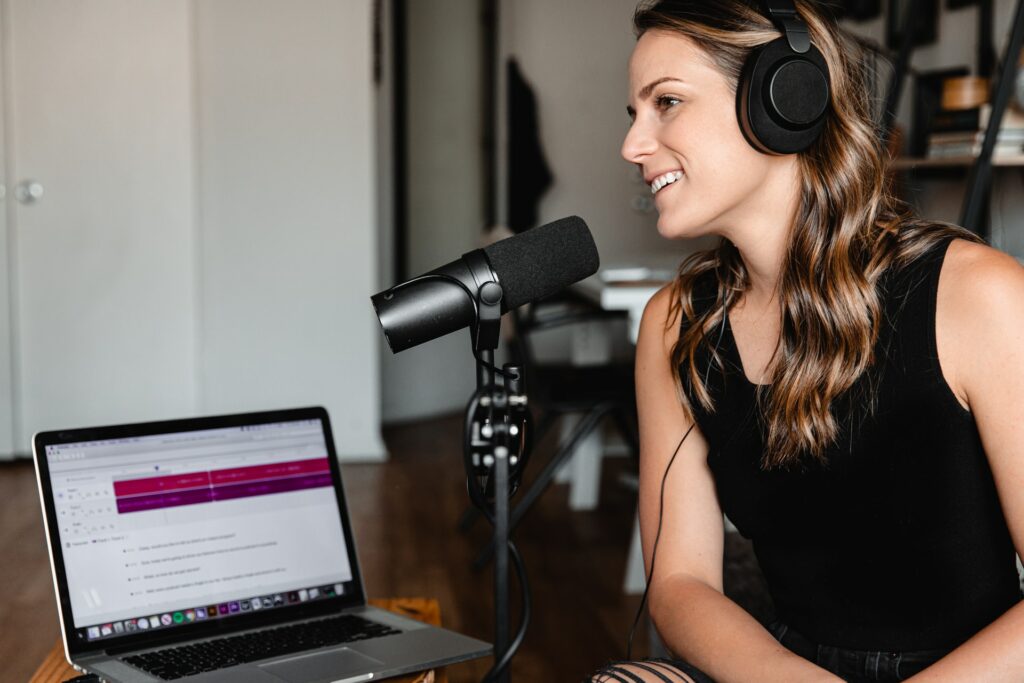Five Things to Improve Virtual Talk Shows
So you’ve started your own virtual talk show, maybe it’s bringing video to a podcast or you’ve decided to interview people in your industry. Now the first show is done, but perhaps you had some technical issues, bad frame rates, low-quality audio, and missing cues. So what can you or your guests do to improve your virtual talk shows?
Pre-Production is Key to Virtual Talk Shows
Pre-production is that thing we all have to learn how to do the hard way. This includes preparing scripts or runs of shows, doing research on guests, and designing the look of a show.
But perhaps the most important element is rehearsals. Aside from learning timings and transitions, you also need to make sure the remote guests have good connections. If your schedule permits, it’s always good to take time to ensure the connection is stable and help your guest figure out any technical issues that may arise. It’s also a good opportunity to get your host and guests to get to know each other a bit so that the conversation during the recording or stream goes a lot smoother.
Call Software for Virtual Talk Shows
While VOIP software like Zoom, Discord, Microsoft Teams have evolved quite a bit in response to more people working remotely, they still lack some of the fundamental tools and controls to make producing virtual talk shows seamless.
Vmix Call is a popular option, but if you have the time, VDO.Ninja is a free open-source alternative that offers all the customization you need. You can actually check out our extended VDO.Ninja tutorial below but some key tools are the ability to separate audio and video sources for your callers, a director’s video/audio channel to manage talent, and basically ALL the customization you’d ever need.
Tools for Remote Callers
Sometimes, remote guests will have problems with their setup. This can range from a noisy AC unit to a messy background, or a struggle to share their screen or presentation. Thankfully XSplit provides tools to improve and simplify this process.
First is XSplit VCam, this can help them with their background by blurring or replacing it. If they don’t even have a webcam, then they can use VCam with XSplit Connect: Webcam to turn their mobile phone into a camera. Then you can add VCam in XSplit Broadcaster. You can also screen capture in Broadcaster and add your google slides as well.
The key tool in XSplit Broadcaster is the virtual microphone. This outputs whatever audio your produce in Broadcaster to your video chat app. Some useful tools in XSplit Broadcaster add noise reduction to your microphone and VSTs to tweak your microphone like EQ or Limiters. Then you just set XSplit Broadcaster as your microphone in the video chat app.
Segments and Time Limits
While some people you can just listen to endlessly, it’s good to create segments or set time limits for certain topics. Certain topics you just run out of things to talk about and it’s good to move on to another topic to keep things fresh and interesting. You see a lot of sports shows where they’ll display that episode’s topics with a timer on how long they’ll be discussing that topic.
Now you don’t have to use that method, but if you’ve prepared a run of shows as mentioned earlier, your host can follow this and help move guests over to the next segment of the virtual talk show. Unless of course, the show you are producing is a free form talk show, then just let your guests rock for however long you like!

Think About Post-Production
Finally, you need to always be producing with post-production and promotion in mind. While it would be great if the podcast or talk show could promote itself as the main content, we live in a world where hot takes, drama, and headlines are what is going to get eyeballs on stuff. So again it’s important to create segments within your show so whoever is editing will know where to look for clips on specific topics.
If you didn’t know XSplit Broadcaster can record multiple profiles and you can determine which scene to record to a particular profile. So if you were on a 3 shot, but one guest went on an extended monologue, if you had a scene recording that particular guest’s camera, you can focus on that recording and create a highlight out of that segment. The greatest chance you’re going to have for your content to be found is on social media, so make your podcast as TikTokable as possible.
